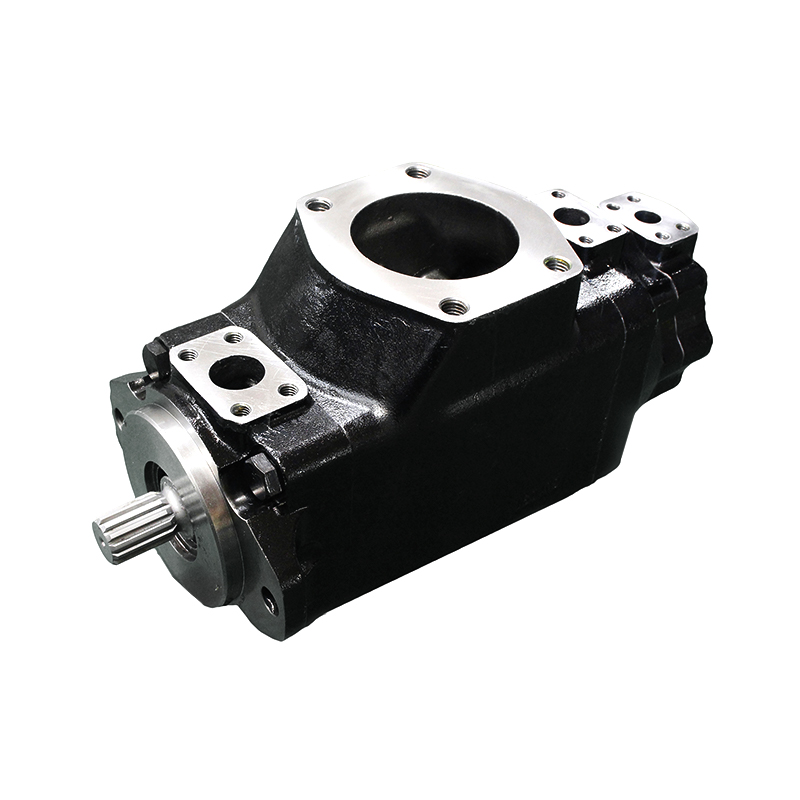Hydraulic vane pumps are widely used in industrial hydraulic systems due to their compact design, high efficiency, and stable flow characteristics. They are especially popular in machine tools, injection molding machines, and mobile equipment. However, like any mechanical component, vane pumps can develop faults over time. Understanding these common faults, their causes, and how to prevent them is critical to maintaining system reliability and avoiding costly downtime.
1. Abnormal Noise During Operation
One of the most frequently reported issues with hydraulic vane pumps is abnormal noise. This may present as whining, knocking, or grinding sounds.
Possible causes include:
Air in the system: Air bubbles entering the hydraulic fluid can cause cavitation, leading to noise and damage.
Worn vanes or rotor: When vanes lose their shape or the rotor is worn out, the pump no longer runs smoothly.
Loose components or poor mounting: Vibrations due to loose fittings can amplify noise.
Improper alignment: Misalignment between the pump and the drive motor can lead to mechanical stress and noise.
Solution:
Bleed the system to remove air, inspect the vanes and rotor, tighten fittings, and check alignment.
2. Reduced Flow or Pressure Output
If the hydraulic system is not producing the required flow or pressure, the vane pump may be underperforming.
Common causes:
Worn internal components: Vanes, cam rings, or side plates that are worn out cannot maintain tight internal clearances.
Internal leakage: Excessive wear or damage to sealing surfaces can cause hydraulic fluid to leak internally.
Incorrect rotational direction: Reversing the pump’s rotation can severely reduce output.
Blocked suction line or clogged filters: Restrictions in the inlet path reduce the amount of oil reaching the pump.
Solution:
Check component wear, inspect for internal leakage, confirm proper pump rotation, and clean or replace filters and suction lines.
3. Overheating of the Pump
Hydraulic vane pumps may overheat if the system is not functioning efficiently.
Reasons include:
Excessive internal leakage: Causes energy loss, which turns into heat.
Running at too high a speed or pressure: Operating beyond design limits increases friction and temperature.
Inadequate cooling: The hydraulic system may lack a cooler or have insufficient oil capacity to dissipate heat.
Contaminated oil: Dirt or sludge in the oil increases resistance in the system.
Solution:
Keep the pump within its rated parameters, ensure the cooling system is functional, and change or filter the hydraulic oil regularly.

4. Cavitation and Aeration
These two problems are often confused but have different causes and consequences:
Cavitation occurs when there is a vacuum at the pump inlet, causing vapor bubbles to collapse violently inside the pump, damaging components.
Aeration is when air enters the pump and mixes with the oil, causing foaming and poor lubrication.
Causes:
Low oil levels
High viscosity oil in cold conditions
Leaky suction lines
Dirty filters restricting oil flow
Consequences:
Pitting of vane surfaces, loss of performance, and increased wear.
Solution:
Maintain proper oil levels, use suitable oil viscosity for the environment, check and seal suction lines, and replace filters regularly.
5. Excessive Wear of Vanes and Cam Ring
Over time, vanes and the cam ring inside the pump wear due to constant friction and pressure.
Causes:
Poor oil quality or contamination: Particles in the fluid act like sandpaper.
Inadequate lubrication: Dry starts or air in the system can prevent oil from reaching the vanes properly.
High operating pressure: Continuous operation near the pump’s maximum rating accelerates wear.
Solution:
Use clean, recommended hydraulic oil, install quality filtration systems, and avoid operating the pump at its pressure limit continuously.
6. Oil Leakage (External or Internal)
Oil leaks, whether visible outside the pump or internal (affecting performance), are serious faults.
External leaks may be due to:
Worn shaft seals
Loose connections
Damaged gaskets
Internal leaks may be due to:
Scored internal surfaces
Warped side plates
Vane deformation
Solution:
Replace seals and gaskets, properly torque connections, and inspect internal components during maintenance.
7. Difficulty in Starting the System
If the hydraulic pump struggles to start, it may indicate deeper issues.
Possible reasons:
Cold, thick oil creating resistance
Air-locked pump inlet
Misaligned drive coupling
Pump shaft damage or binding
Solution:
Warm up the oil before starting, bleed the air, check alignment and coupling condition, and inspect the shaft for signs of seizing.
Hydraulic vane pumps are highly effective and reliable when maintained properly, but they are not immune to wear, contamination, or improper operation. By understanding the common faults—from abnormal noise and overheating to low pressure and cavitation—operators can diagnose issues early and perform timely maintenance.
To reduce faults:
Monitor system pressure and temperature regularly
Use clean, high-quality hydraulic oil
Perform preventive maintenance on schedule
Inspect vanes, seals, and filters periodically
By doing so, you'll extend the life of your vane pump and maintain smooth, trouble-free hydraulic system performance.

 English
English русский
русский Español
Español عربى
عربى

